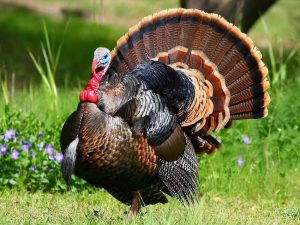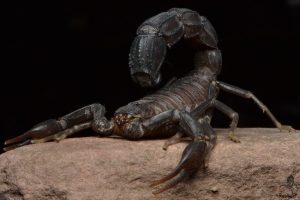The Tasmanian Devil (scientific name: Sarcophilus harrisii) is one of Australia’s most distinctive and famous carnivorous animals, particularly on the island of Tasmania. With their aggressive nature, terrifying screeches, and ability to eat every part of an animal carcass, they have been dubbed the animal kingdom’s ultimate predator. Join KnowAllAnimals to learn more about the Tasmanian Devil’s characteristics, hunting habits, and its role in the ecosystem.
Scientific classification
- Kingdom: Animalia
- Phylum: Chordata
- Class: Mammalia
- Infraclass: Marsupialia
- Order: Dasyuromorphia
- Family: Dasyuridae
- Genus: Sarcophilus
- Species: S. harrisii
1. Introduction to the Tasmanian Devil
The Tasmanian Devil (scientific name: Sarcophilus harrisii) is a carnivorous marsupial belonging to the family Dasyuridae. They live primarily on the island of Tasmania, which is located about 240 km off the southern coast of mainland Australia.
The Tasmanian Devil is a ferocious predator with the strongest bite force of any animal for its body size. Following the extinction of the Tasmanian wolf in 1936, the Tasmanian Devil officially became the largest carnivorous marsupial in the world.
This animal is primarily nocturnal, often making terrifying screeching sounds when it hunts. Its main diet consists of reptiles, small mammals, and insects. It also eats carrion, livestock, and other large animals.
1.1. Key Identifying Characteristics
The Tasmanian Devil has physical traits and characteristics that make it easy to identify:
Sturdy Body: The Tasmanian Devil has a plump but muscular body, with a length of 50–80 cm (20–31 inches) and a weight of 6–12 kg (13–26 lbs).
Sharp Teeth: Their jaws are extremely strong and can easily crush hard bones.
Solid Black Fur with White Spots: The majority of their body is covered in black fur, sometimes with white spots on their chest or rump.
Terrifying Screech: When threatened or competing for food, the devil lets out a high-pitched, ferocious screech that terrifies its enemies and other animals.
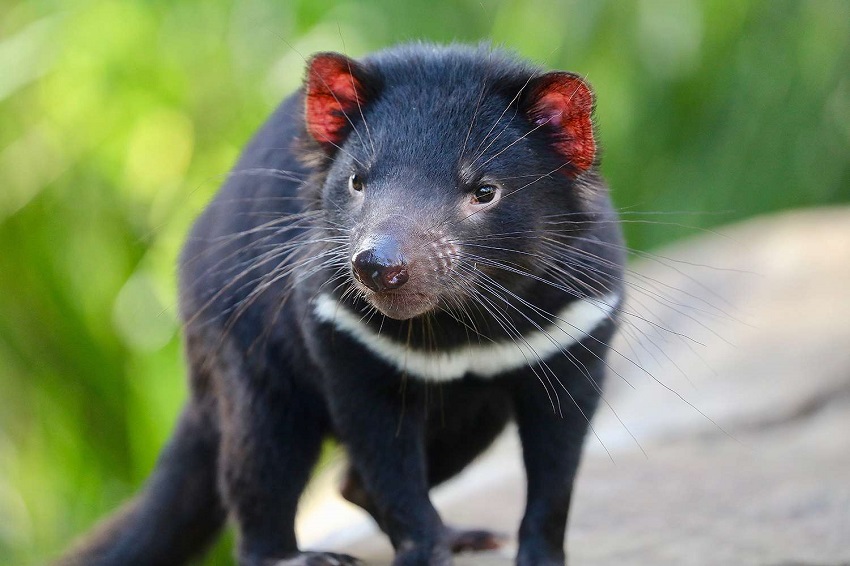
1.2. Aggressive Hunting and Eating Habits
Tasmanian devils have several interesting habits, including:
Aggressive Nature
Tasmanian devils have an aggressive personality and will attack and tear apart prey—or even their own kind—mercilessly. They can easily take down prey that is up to six times their body weight thanks to their jaws that can open 180 degrees.
According to scientists, compared to other animals of the same size, the Tasmanian devil has the strongest bite force. In fact, if their body size were similar to a tiger or a lion, their bite force could be up to three times stronger than these predators.
Omnivorous
Tasmanian devils eat a lot, and the amount of food they consume can be up to half of their body weight. Their diet is quite varied, ranging from carrion and garbage to animals like venomous snakes, kangaroos, rabbits, and lizards.
They use their powerful bite to chew and swallow prey, leaving no trace behind, not even bones. They can even finish eating a large kangaroo in just a few minutes.
Courtship
The back of a female Tasmanian devil’s neck often has large lumps. During mating season, these lumps will swell, turn red, and emit a strong, distinctive odor. The more pungent the odor, the more likely it is to attract males.
During the breeding season, males will screech and fight each other for the right to mate. They often attack the face, throat, and other lethal parts of their rivals, all while the female watches.
After mating, the female will try to escape from the den, while the male will do his best to keep her there. This is because of the female Tasmanian devil’s “here today, gone tomorrow” personality. The babies in a female’s womb can have several different fathers.
Seven days after mating, the lumps on the back of the female’s neck will gradually disappear, and the mating season will end. At this point, the female can leave the den and go wherever she pleases.
Giving Birth and Raising Young
During pregnancy, a female Tasmanian devil’s belly will get bigger, and her body movements will become slower. During this time, they are very afraid of being attacked by predators like birds of prey or dingoes. Therefore, the male will take on the role of protecting the female throughout her pregnancy.
Their gestation period usually lasts for one month, and a litter can consist of 20–40 young. But not all of them will survive. The young in their mother’s pouch will constantly compete and fight with each other for a chance to get milk. Some small and weak young are at risk of starving to death because they can’t get milk.
Survival Ability of the Young
Baby Tasmanian devils will live in their mother’s pouch for about 100 days, but the nursing period will last up to eight months. During this time, the female will bring her entire litter along to forage for food.
When the young start to live independently, their immune system and survival skills become stronger than ever. They can eat carrion, lizards, or even venomous snakes without getting sick.
Young Tasmanian devils are often more agile than adults and can climb high up trees. If they survive their first year, they can live for 7–8 years in the wild.
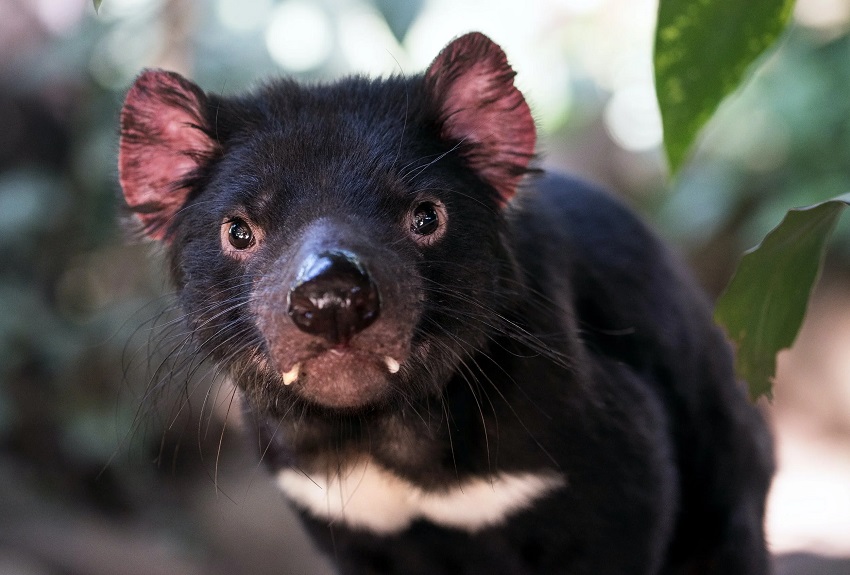
2. Tasmanian Devil’s Diet
Tasmanian devils are primarily scavengers, but they will also hunt small prey when necessary. Their common food sources include:
Carrion: This is their main food source, typically from animals that have died in accidents or larger animals that have been hunted.
Small animals: When food is scarce, they may hunt birds, mice, lizards, or snakes.
Fruits and insects: Occasionally, they also eat wild fruits and insects to supplement their diet.
3. Distribution and Habitat
Tasmanian devils are mainly found on the island of Tasmania, where they live in a variety of wild environments, including:
Tropical and temperate forests: These are ideal places for devils to hide and hunt for food.
Grasslands and bushlands: Areas with tall grass and dense bushes are where they typically hunt and build shelters.
Areas near roads and farms: Due to the abundant food source from roadkill, Tasmanian devils often appear near roads.
4. Role in the Ecosystem
Tasmanian devils play a vital role in the ecosystem, helping to maintain balance and clean up the environment:
Carrion cleanup: By eating decaying animal carcasses, they help reduce the risk of disease and keep the environment clean.
Pest control: When they hunt, they help control the population of mice and other small animals, preventing an out-of-control increase in these species.
Misconceptions and Threats
Despite their fierce appearance and terrifying screech, Tasmanian devils rarely attack humans. However, they face many threats from both nature and humans:
DFTD (Devil Facial Tumor Disease): This is a specific type of cancer that can be transmitted through bites and has caused a significant decline in the Tasmanian devil population.
Hunting and road accidents: Tasmanian devils are often killed in road accidents while foraging for food.
Habitat loss: Human encroachment on their natural habitats reduces their shelter and food sources.
Social Behavior and Biology
Solitary lifestyle: Tasmanian devils are mostly solitary and only gather to feed on large carcasses or during the breeding season.
Reproduction: Females can give birth to 20–30 young per litter, but only 4–6 survive because of a limited number of teats.
Lifespan: Tasmanian devils can live for about 7–8 years in the wild.
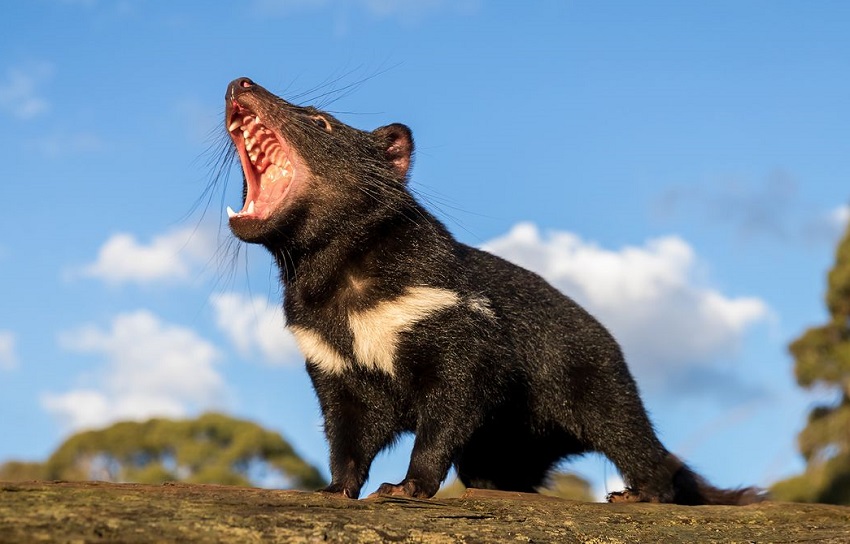
5. FAQs
1. Where do Tasmanian devils live?
They are found mainly in the wild forests and coastal scrublands of Tasmania, an island state of Australia.
2. What do Tasmanian devils eat?
They are carnivorous marsupials that feed on small animals, birds, insects, and carrion.
3. Are Tasmanian devils dangerous to humans?
Generally, they avoid humans and are not a threat, but they can bite if provoked or cornered.
The Tasmanian Devil is a wild icon of Tasmania with unique characteristics and a vital role in its ecosystem. Despite their fierce appearance and terrifying screeches, they are nature’s “sanitation workers,” helping to maintain ecological balance and keep the environment clean. Protecting the Tasmanian Devil not only helps preserve a rare animal but also contributes to the conservation of biodiversity and the beauty of the wild.
References: https://en.wikipedia.org/wiki/Tasmanian_devil

